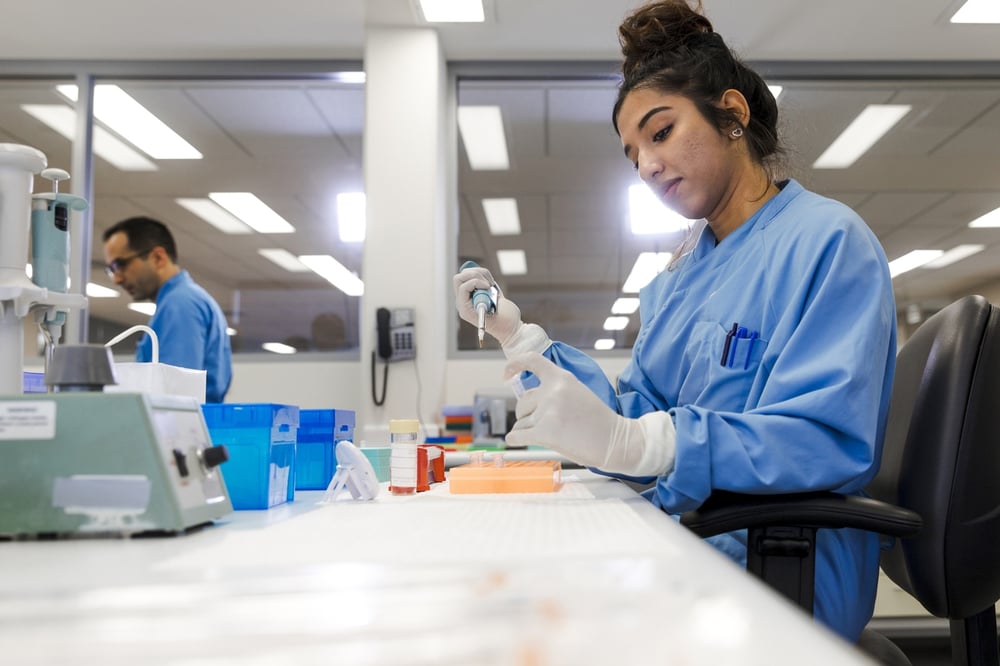How Your Laboratory Can Overcome Labor Shortages
 The labor shortages sweeping the US and other parts of the world extend to the diagnostic laboratory space as well. The diagnostic laboratory industry was already short on qualified people to fill the key roles required under CLIA. On top of that pre-existing worker shortage, the diagnostic laboratory testing industry has demanded a lot of its personnel over the course of the pandemic. The labor shortages sweeping the US and other parts of the world extend to the diagnostic laboratory space as well. The diagnostic laboratory industry was already short on qualified people to fill the key roles required under CLIA. On top of that pre-existing worker shortage, the diagnostic laboratory testing industry has demanded a lot of its personnel over the course of the pandemic. These factors have created burn-out and resulted in staff turnover and challenges for diagnostic testing laboratories nationwide.
The labor shortages sweeping the US and other parts of the world extend to the diagnostic laboratory space as well. The diagnostic laboratory industry was already short on qualified people to fill the key roles required under CLIA. On top of that pre-existing worker shortage, the diagnostic laboratory testing industry has demanded a lot of its personnel over the course of the pandemic. The labor shortages sweeping the US and other parts of the world extend to the diagnostic laboratory space as well. The diagnostic laboratory industry was already short on qualified people to fill the key roles required under CLIA. On top of that pre-existing worker shortage, the diagnostic laboratory testing industry has demanded a lot of its personnel over the course of the pandemic. These factors have created burn-out and resulted in staff turnover and challenges for diagnostic testing laboratories nationwide.
As the diagnostic testing laboratory industry continues to endure labor shortages with increased demand for testing services, here’s how laboratories can weather these challenges and emerge stronger as a result.
Cross-Training on Critical Processes
Training laboratory personnel on testing processes is a significant investment of time and money. When the laboratory has personnel specifically assigned to and trained on only a subset of its processes, the loss of those key personnel can be devastating to the laboratory’s ability to deliver test results in a timely manner. Also, training individuals on only a few of the processes can result in personnel feeling like there is no room to grow within the company and result in further attrition. The laboratory loses valuable, qualified personnel (and the investment in their hiring and training walks out the door with them).
For all of these reasons, clinical laboratories should use this situation as an opportunity to evaluate how its current laboratory workforce can be cross-trained on critical processes. Be sure your laboratory is reviewing the credentials and prior experience of each of your testing personnel to look for cross training opportunities. This approach provides staff with the opportunity to grow their careers inside your organization. Also, cross-training of personnel provides a safety net for your laboratory if a key person becomes ill, takes a new job, or is not able to continue with your organization.
Batching Samples
As you are reviewing your personnel’s credentials, also take some time to review basic efficiencies within your laboratory processes. One way that laboratories increase efficiencies temporarily during times of staff shortages is to batch samples on tests where a slightly extended test result turnaround time will not have an impact on patient care. For the long term, batching of samples may not be in the laboratory’s best interest if turnaround time is a commercial differentiator (which it often is), but knowing when and how to leverage this strategy at the right times may help your laboratory redistribute the workload during a labor shortage.
Streamlining Your Laboratory Using a Laboratory Information Management System (LIMS)
The most enduring way to ensure optimal efficiency for your lab is to implement a well-designed laboratory information management system (LIMS). All of the laboratory’s workflows are streamlined when a well-designed LIMS is implemented. A LIMS can reduce staffing needs in certain areas if manual processes are still in use, can streamline ordering, accessioning and reporting, and has an underlying database that stores all of your laboratory’s critical data. One can associate data by patient, ordering physician, date of service, and any other critical data element, as well as review work in-process to adjust workload among laboratory personnel.
A LIMS frees up valuable time for your personnel and reduces the time and costs associated with manual, paper-based processes and unwieldy spreadsheets. A LIMS can store all of your laboratory’s critical data elements for as long as you need it. Paper-based records take up valuable space in a laboratory or result off-site storage costs. When your laboratory needs to retrieve information from paper records (say, at an inspection), personnel will be tied up sifting through files to find what is needed. And spreadsheets often make data retrieval difficult due to the existence of different versions of the spreadsheet in different places, making resolution of the dataset difficult. A LIMS has a centralized database, where data can be easily retrieved, and a lab manager can rest easy knowing data cannot be changed and all activities are tracked in an audit log. Overall, a LIMS can reduce the day-to-day burden on laboratory personnel of managing lab data – one less headache during a time where lab personnel are needed more than ever.
If your laboratory is strained by the current labor shortage, reach out to ApolloLIMS. We understand the positive impact a well-designed LIMS could have on your organization. Our team can bring decades of experience, unparalleled support, and comprehensive tools and expertise to your lab. Contact us to learn more about the Apollo Alliance.
















